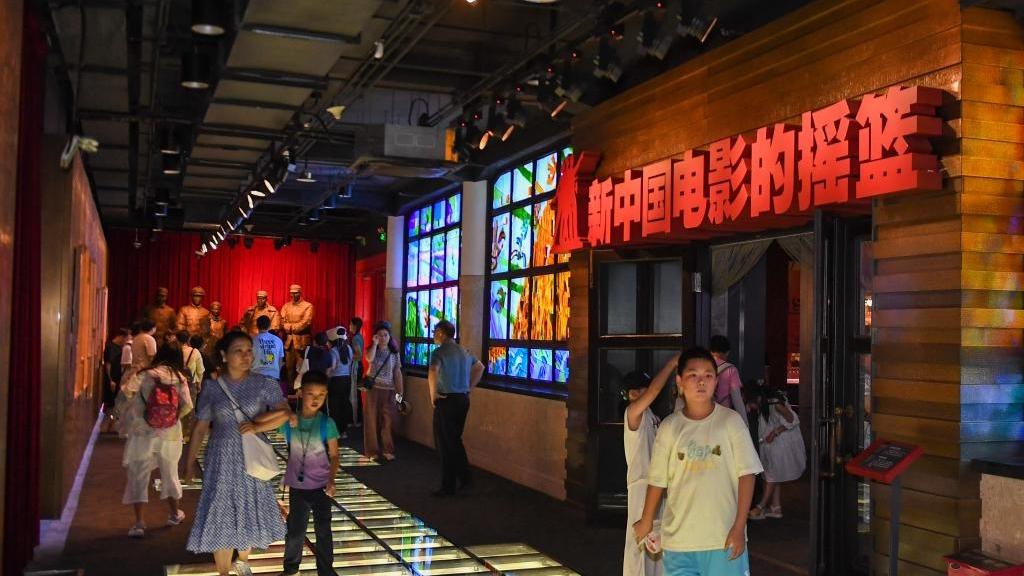PBC to conduct 500b yuan of 6-month outright reverse repos to maintain liquidity
China's central bank on Thursday said that it will conduct 500 billion yuan ($69 billion) of outright reverse repos on Friday using a fixed-quantity, interest-rate bidding process with multiple price levels, for a term of six months (182 days), in a move to maintain ample liquidity in the banking system. It will be the second time this month the bank has used this tool to boost market liquidity.
The move is the latest step by the central bank to maintain an appropriately accommodative liquidity environment.
Bian Yongzu, executive deputy editor-in-chief of Modernization of Management magazine, told the Global Times that the two consecutive large-scale reverse repo operations send a clear signal of the central bank's resolve to maintain sufficient liquidity in the capital and financial markets to ensure stability.
On August 8, the People's Bank of China (PBC) carried out a 700 billion yuan outright reverse repo operation under the same bidding mechanism, with a term of three months (91 days), to keep liquidity in the banking system ample, according to the bank's official website.
A total of 900 billion yuan in outright reverse repos will mature in August, meaning the two operations conducted in February and May will result in a net injection of 300 billion yuan.
Bian noted that the more than 300 billion yuan in liquidity will significantly enhance funding availability in the financial and capital markets, facilitate financing for enterprises and local governments, boost economic growth, and play a positive role in safeguarding social stability and improving livelihoods.
Following a reserve requirement ratio (RRR) cut in May, the PBC has continued to conduct medium-term lending facility (MLF) operations and outright reverse repos. Experts noted that it is keeping medium-term liquidity in a net injection position.
The PBC carried out two outright reverse repo operations in June and one in July, with a total of 1.4 trillion yuan conducted each month.
A reverse repo is a monetary policy operation in which a central bank purchases securities from commercial banks through bidding, with an agreement to sell them back at a later date.
To maintain adequate liquidity in the banking system and further expand its monetary policy toolkit, the PBC introduced the outright reverse repo instrument in its open market operations in October 2024.
An outright reverse repo is a liquidity injection method in which the central bank purchases securities outright, without the obligation to repurchase them later. Unlike traditional reverse repos, the outright model grants the central bank full rights to hold or resell the securities, which typically include treasury bonds and local government bonds, according to the Xinhua News Agency.
The operations target primary dealers in the open market, and are, in principle, conducted once a month with a maximum term of one year.
An increasing number of enterprises and local governments are raising funds through corporate and local government bond issuances to support stable economic growth.
With both central and local bond issuance expanding this year, maintaining sufficient liquidity for commercial banks is particularly important, Bian said.
"Compared with the MLF, reverse repos are more direct, as the central bank injects funds into the market by purchasing bonds, exerting a faster and more pronounced impact on liquidity. The MLF, in contrast, mainly works by adjusting lending rates and lowering financing costs," Bian noted.
He said that given the current low domestic interest rates and a complex external monetary environment, using reverse repos to release liquidity is better aligned with present needs and supports the healthy, positive development of the financial market.
A package of financial support measures introduced in the first half of the year has yielded tangible results, providing a significant boost to the real economy.
PBC data showed that outstanding aggregate financing to the real economy grew 8.9 percent year-on-year at the end of June, while broad M2 money supply rose 8.3 percent, up 0.8 and 2.1 percentage points, respectively, from a year earlier. In the first half of this year, new yuan loans totaled 12.92 trillion yuan, underscoring the financial system's strong credit support for the real economy.
Photos
Related Stories
- Nation set to further advance financial opening-up
- China's central bank unveils eight major financial opening-up measures at 2025 Lujiazui Forum in Shanghai
- China's central bank to conduct 1-trillion-yuan outright reverse repo operation
- China's central bank steps up support for small, medium businesses
- PBOC pledges more monetary policy support
- Fed moves set to give PBOC more options
- Two new tools to guide interest rates
- China's central bank adds liquidity via reverse repos
- China's central bank adds liquidity via reverse repos, MLF
- PBOC may up bond trading
Copyright © 2025 People's Daily Online. All Rights Reserved.









